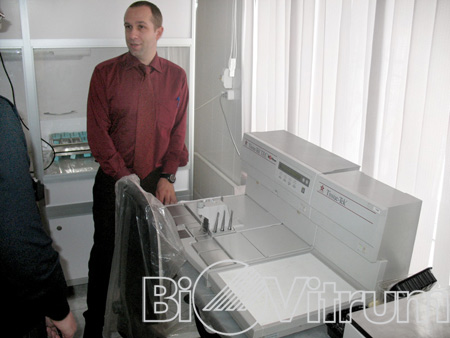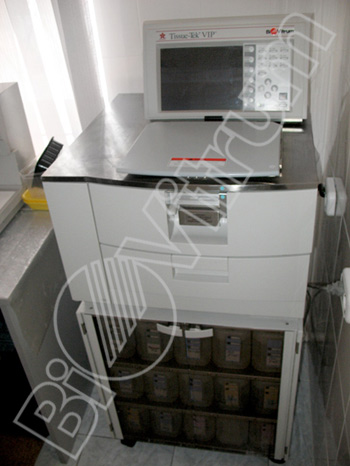News
- Main
- /
- Press-Center
- /
- News
- /
- Russian Society of Pathologists’ Presidium Members Met Tula Specialists at the Conference at the End of February
Russian Society of Pathologists’ Presidium Members Met Tula Specialists at the Conference at the End of February
From February 18 through 20, 2009 Tula Regional Clinical Hospital hosted a meeting of Tula pathologists and leading morbid anatomy experts of Russia, including in particular: O.D.Mishnev, M.D., Professor, Chief pathologist of the Ministry of Public Health and Social Development; P.V.Kakturskiy, Professor, President of RSP; O.A.Trusov, M.D., Professor, RSP Presidium member; А.I.Shchogolev, M.D., Professor, the Secretary General of RSP; А.P.Rakshu, M.D., Professor, and D.S.Melnichenko, Head of Morbid Anatomy Department of the Consulting and Diagnostic Center No.1.
As a part of the conference the pathologists and RSP representatives discussed current practice issues that are of interest among the Russian specialists. Special priority was given to the report by the Chief Pathologist of the Ministry of Public Health and Social Development, M.D., Professor, Therapeutic Faculty Morbid Anatomy Department Chairman of RSMU, O.D. Mishnev, concerning organizational issues of the Russian morbid anatomy service. Under-staffing at the increasing research volume is being the challenge today. One of the decision options is a hi-tech laboratory re-equipment that aims both at diagnostics standardization and individual time and labor saving. In may be no accident that the pathologists’ conference took place at the Tula Regional Clinical Hospital which histological laboratory was re-equipped completely in 2009. New technologies helped Tula hospital employees to standardize and accelerate research results. In addition they crack the under-staffing problem by means of time and labor saving per each lab operator preparing examination samples.
As another part of the conference, Corresponding Member of the Russian Academy of Medical Sciences (RAMS), M.D., Professor, Head of the Human Morphology Research Institute of RAMS, L.V. Kakturskiy, presented a new chronic gastritis classification approved at the Russian Society of Pathologists’ Conference. The presented classification combined convenient visual-analogue scale of the Modified Sydney System and table assessment of chronic gastritis degree and activity.

Director of the Tula Regional Clinical Hospital A.F.Simonov and Head of Morbid Anatomy Department A.V.Losev showed the re-equipped laboratory to the guests. New laboratory processing facilities included automated Multiple Stainer Tissue-Tek Prisma™ and Coverslipper Tissue-Tek® Film™. The unique double-module system by SAKURA provides the user with total solution for routine staining, as well as special (IHC) staining, followed by coverslipping and resulting in a permanent preparation. Coverslipper Tissue-Tek® Film™ has an unloading capacity, 12 baskets for 20 slides each, that allows placing up to 240 ready preparations on a convenient carousel. As several configurations are available for routine staining, special staining or a combination of both, Tissue-Tek® Prisma™ is the most flexible multiple stainer in the market of automated stainers linked to coverslippers.
The characteristic feature of the automated system is that Tissue-Tek® Prisma™ & Tissue-Tek® Film™ can operate independently and be used separately. Anytime the operator can connect them and use as fully automated slide staining and coverslipping system.
A list of new laboratory equipment included Tissue-Tek® VIP™ 5 Vacuum Infiltration Processor. Closed systems were initially invented by SAKURA, they are being updated repeatedly and have 16,000 users by now. The main advantage of the processor is that processing is performed under controlled vacuum and pressure conditions improving the depth of reagents penetration. Automated reagents transfer provides for complete operator’s safety.
Tissue-Tek® TEC™ 5 Tissue Embedding Console System allows for automated paraffin embedding. The system comprising two modules (heated and cooled areas) and paraffin chamber with a dispenser is arranged as an ergonomic workstation for paraffin embedding. It has fully programmable ON/OFF control with automatic start and stop, and precise temperature control of all areas. Cryo module and embedding module can operate independently and be used separately. Anytime the operator can connect them and use as fully automated paraffin embedding system.

Lab operators saw the true value of Accu-Cut®SRM™200 Rotary Microtome for sectioning of paraffin-embedded specimens. The microtome provides for multiple sectioning that is an advantage over a sledge microtome. Another beneficial feature of the instrument is various settings for trimming
Since now the examinations at the Tula Regional Clinical Hospital will be performed with the Microscope Eclipse 50i, that turns routine practice of clinical and research laboratories into pleasure thanks to its specifications, features, and ergo-design.
Hi-tech laboratory re-equipment is completed with a slide archiving cabinet. One full drawer weighs about 20kg. Special guides allow for easy multiple opening and closing the drawers at the archive use, moreover they fix fully open drawer reliably and safely.
Corresponding Member of the Russian Academy of Medical Sciences (RAMS), M.D., Professor, Head of the Human Morphology Research Institute of RAMS, Kakturskiy L.V. marked laboratory capabilities very high: "I am impressed favorably with the re-equipped laboratory. The installed equipment is the solution for the best practice. One should mention excellent labor management based on the high-tech resources, complete lab operators’ professionalism, ideal sterility and order. I am very well pleased with the potential ensured by the state-of-the-art technologies as well as with BioVitrum’s activity and dedication to the healthcare facilities equipment issues."











